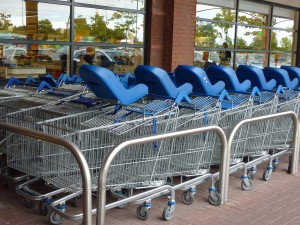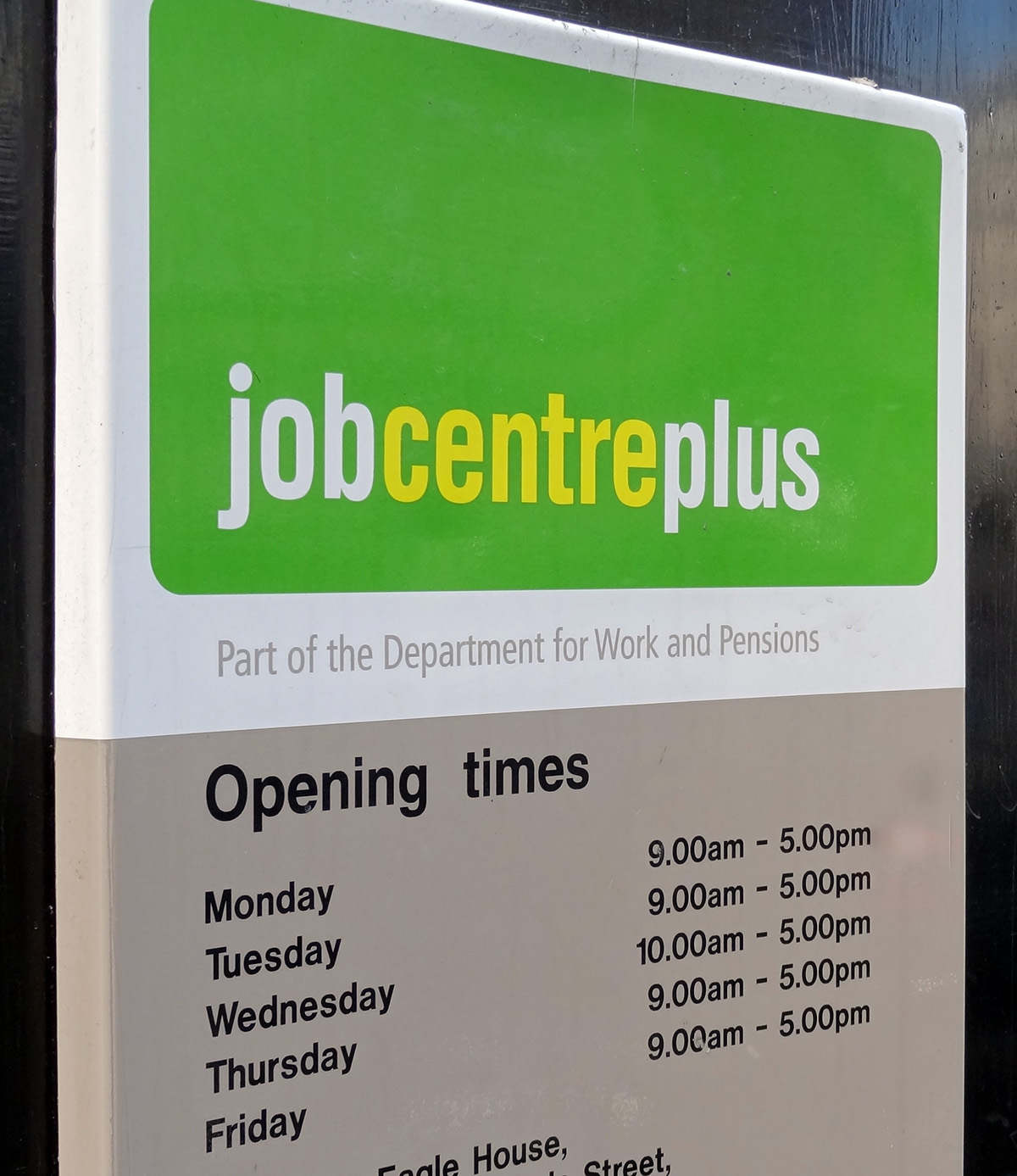 The rate of inflation in the UK is measured using the Consumer Prices Index (CPI). This is made up of a basket of goods and the ONS updates this ‘basket’ each year to ensure it is representative of what the average UK household buys. The basket contains 700 items, with 180,000 individual prices collected each month.
The rate of inflation in the UK is measured using the Consumer Prices Index (CPI). This is made up of a basket of goods and the ONS updates this ‘basket’ each year to ensure it is representative of what the average UK household buys. The basket contains 700 items, with 180,000 individual prices collected each month.
In recent years, items such as lip gloss have been added to the basket of goods and in the latest adjustment, the ONS has added tablet computers, amongst other things. This is a market that has seen enormous growth. It has been added to the basket as a means of giving a more accurate representation of the price changes faced by the average consumer. The ONS has made it clear that items are not added simply because they are new or removed simply because spending on them has fallen.
‘In each of these cases, the item has not been added because spending has increased or because the product is new on the market … It is purely as part of the rebalancing of the basket to improve its representation of overall price change.’
It is essential that these changes are made each year, as consumer buying habits do fluctuate considerably. One area in particular has been consumer responses to changes in technology. For example, developing and printing colour film has been removed as, with the development of digital cameras, this is no longer reflective of what a representative household spends its money on. Further to this, some items that have previously been used in calculating the RPI have now been added to the CPI, again to give a clearer picture of household spending in the UK. The following articles consider what’s in and what’s out.
Teenage fiction and iPads now in official UK shopping basket Guardian, Julia Kollewe (13/3/12)
Tablet computers added to UK inflation basket BBC News (13/3/12)
 New items used to calculate inflation BBC News, Emma Simpson (23/3/12)
New items used to calculate inflation BBC News, Emma Simpson (23/3/12)
 Tablet Computers Enter ‘Inflation Basket’ Sky News, Darren Morgan (ONS) (13/3/12)
Tablet Computers Enter ‘Inflation Basket’ Sky News, Darren Morgan (ONS) (13/3/12)
Inflation basket of goods 2012: full list of what’s out and what’s in Guardian, Simon Rogers (13/3/12)
Tablet computers added to inflation basket of goods Telegraph (13/3/12)
How has the UK’s ‘inflation’ basket has changed? Metro, Ross McGuinness (27/3/12)
iPad and Galaxy added to inflation index Financial Times, Norma Cohen (13/3/12)
Questions
- What is the difference between the CPI and RPI? Which is usually higher? Explain your answer.
- How is the CPI calculated and hence how is inflation measured?
- What impact has technological progress had on the basket of goods that the representative household purchases? Do you think that technological progress make it more or less important for the basket of goods to be reviewed annually?
- Do you think products such as the iPad should be included in the CPI? Are they truly representative?
- In the second Guardian article, you can access a list of the products that are ‘in and out’. Is there anything on there that you think should be in or that should be out? Be sure to justify your answer!
 Disagreements are hardly an uncommon occurrence during Prime Minister’s Questions and today the key issue up for debate was UK unemployment. Figures released show that in the 3 months to November 2011, UK unemployment rose to 2.685 million – an increase of 118,000. The ONS said that unemployment now stands at 8.4% – the highest figure in well over a decade.
Disagreements are hardly an uncommon occurrence during Prime Minister’s Questions and today the key issue up for debate was UK unemployment. Figures released show that in the 3 months to November 2011, UK unemployment rose to 2.685 million – an increase of 118,000. The ONS said that unemployment now stands at 8.4% – the highest figure in well over a decade.
However, the increase in unemployment is not as high as it was in the 3 months previous to that, which is possibly an indication that the labour market is slowly beginning to recover and the government’s labour market policies are starting to take effect. The government claimed that cuts in the public sector will be compensated by growth in private sector jobs, but the evidence from the ONS did little to back this up.
The labour market is crucial for the recovery of the UK. Jobs mean income and income means consumer spending. If the job market remains uncertain and more people enter unemployment, consumer spending is likely to remain weak for some time. Chris Williamson, the chief economist at Markit:
The increase in unemployment, plus job security worries and low pay growth for those in work, means consumer spending may remain very subdued this year, despite lower inflation alleviating the squeeze on real incomes that caused so much distress to households in 2011.
One area of specific criticism leveled at the Coalition was the extent of youth unemployment, which reached 22.3%. Ed Miliband said the government had cut ‘too far and too fast’ and that it will be remembered for standing aside and doing nothing ‘as thousands of people find themselves unemployed’. The figures are clearly concerning, but the Coalition maintains that policies designed to tackle the labour market are beginning to take effect and over the coming months, the economy will begin to see a decline in the unemployment rate. The following articles look at the unemployment crisis.
Articles
UK unemployment rises to 2.8m Guardian, Heather Stewart (18/1/12)
Leaders clash in commons over jobless rise BBC News (18/1/12)
UK jobless rate hits new 17-year high Financial Times, Brian Groom (18/1/12)
Unemployment rise: reaction The Telegraph, Louise Peacock (18/1/12)
Unemployment total rises by 19000 The Press Association (18/1/12)
Politicians give cautious welcome as quarterly unemployment falls by 1000 in Wales WalesOnline, Claire Miller (18/1/12)
 Employment Minister: unemployment is too high The Telegraph (18/1/12)
Employment Minister: unemployment is too high The Telegraph (18/1/12)
 Chris Grayling: ‘Unemployment figures are complex’ BBC News (18/1/12)
Chris Grayling: ‘Unemployment figures are complex’ BBC News (18/1/12)
Data
Unemployment in graphics BBC News (18/1/12)
Data Tables: Labour Market Statistics Excel Spreadsheets ONS January 2012
Questions
- What type of unemployment is being referred to in the above articles?
- Explain the mechanism by which a recession will lead to higher unemployment.
- Using a diagram to help your explanation, analyse the impact of a fall in aggregate demand on the equilibrium unemployment rate and wage rate. What happens to unemployment if wages are sticky downwards?
- What can explain such different stories of unemployment between Scotland, England and Wales?
- What policies have the Coalition implemented to tackle the rising problem of unemployment? On what factors will their effectiveness depend?
- Why is the UK’s job market so important for the future economic recovery of the UK?
GDP (or Gross Domestic Product) measures the value of output produced within a country over a 12-month period. It is this figure which we use to see how much the economy is growing (or shrinking). We can also look at how much different sectors contribute towards this figure. Over the past few decades, there has been a significant change in the output of different sectors, as a percentage of GDP, within the UK economy. In particular, the contribution of manufacturing has diminished, while services have grown rapidly.
However, there is one specific area that is making a growing contribution towards UK GDP and is expected to see acceleration in its growth rate by some 10% annually over the next few years: the internet. Although the internet is not an economic sector, the Boston Consulting Group (BCG) said that if it was, it would be the UK’s fifth largest sector and according to a report by Google, it is worth approximately £100 billion per year to the UK economy. Furthermore, it is an area in which the UK is one of the leading exporters. The emergence of the internet has transformed industries and individual businesses and the trend looks set to continue. The report by Google found that some 31 million adults bought goods and services online over the past year, spending some £50 billion.
What are the benefits for businesses of internet shopping and does it have an impact on the retail outlets on Britain’s highstreets? The answer is undoubtedly yes, but is it good or bad? What does the emergence of this new ‘sector’ mean for the UK economy?
Articles
UK net economy ‘worth billions’ BBC News (28/10/10)
UK’s internet industry worth £100 billion report Guardian, James Robinson (28/10/10)
’Nation of internet shopkeepers’ pumps £100 billion into economy Independent, Nick Clark (28/10/10)
UK internet is now worth £100bn to UK economy Telegraph, Rupert Neate (28/10/10)
Google at 10 BBC News, Success Story, Tim Weber (4/9/08)
Britain’s £100bn internet economy leads the world in online shopping Guardian, James Robinson (28/10/10)
Report
How the internet is transforming the UK economy The Boston Consulting Group October 2010
Government Statistics
United Kingdom: National Accounts, The Blue Book 2009 Office for National Statistics 2009 edition
Questions
- What is the UK’s GDP? How does it compare with other countries and how has it changed over the past 10 years?
- How does internet provision contribute towards growth? Think about the AD curve. Illustrate this on a diagram and explain the effect on the main macroeconomic objectives.
- Is there a problem with becoming too dependent on this emerging sector?
- How has the internet and online environment helped businesses? Think about the impact on costs and revenue and hence profits.
- What explanation is there for the change in the structure of the UK economy that we have seen over the past few decades.
- Will internet shopping ever replace the ‘normal’ method of shopping? Explain your answer.
 The rate of inflation in the UK is measured using the Consumer Prices Index (CPI). This is made up of a basket of goods and the ONS updates this ‘basket’ each year to ensure it is representative of what the average UK household buys. The basket contains 700 items, with 180,000 individual prices collected each month.
The rate of inflation in the UK is measured using the Consumer Prices Index (CPI). This is made up of a basket of goods and the ONS updates this ‘basket’ each year to ensure it is representative of what the average UK household buys. The basket contains 700 items, with 180,000 individual prices collected each month. New items used to calculate inflation BBC News, Emma Simpson (23/3/12)
New items used to calculate inflation BBC News, Emma Simpson (23/3/12) Tablet Computers Enter ‘Inflation Basket’ Sky News, Darren Morgan (ONS) (13/3/12)
Tablet Computers Enter ‘Inflation Basket’ Sky News, Darren Morgan (ONS) (13/3/12)